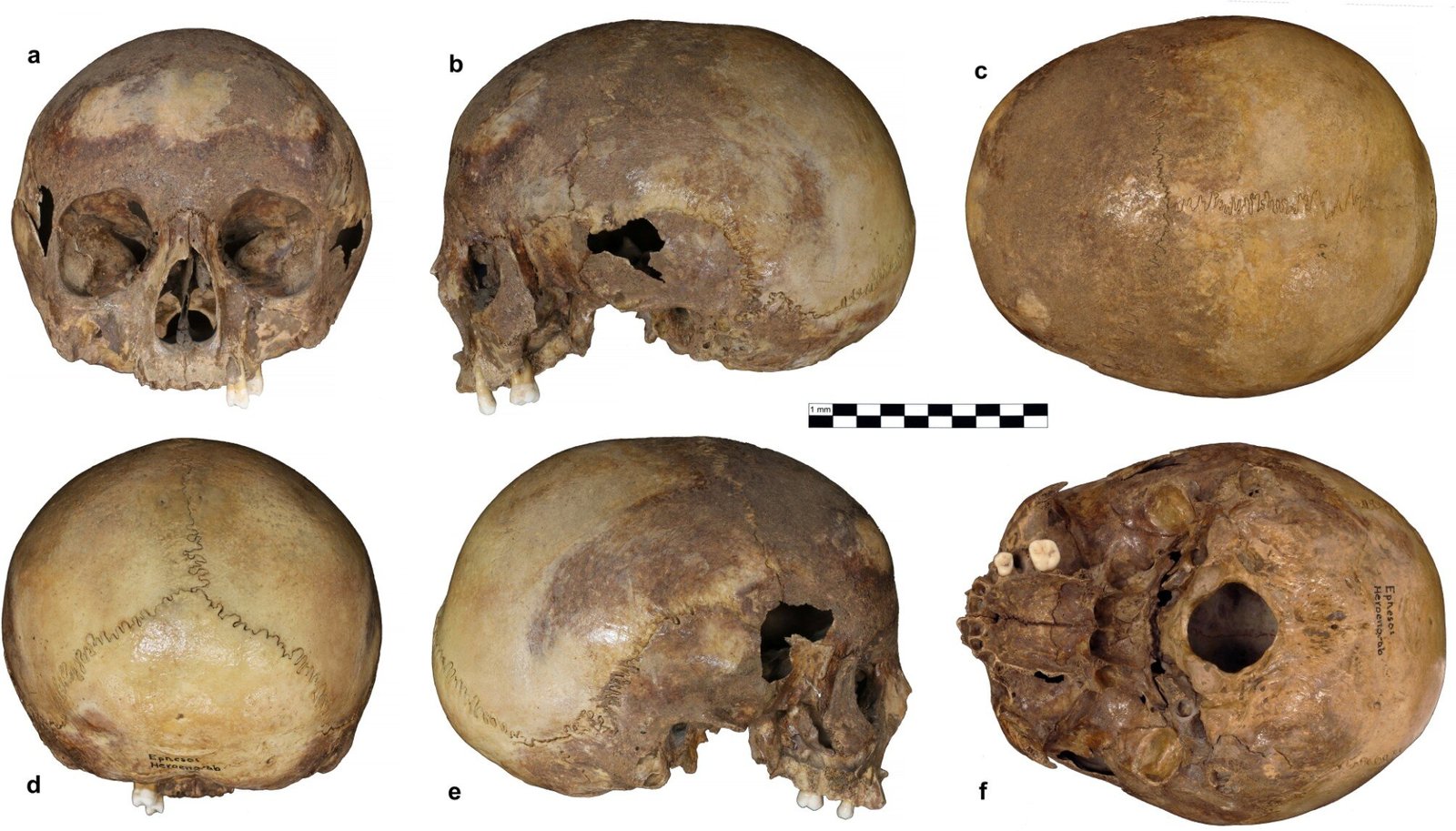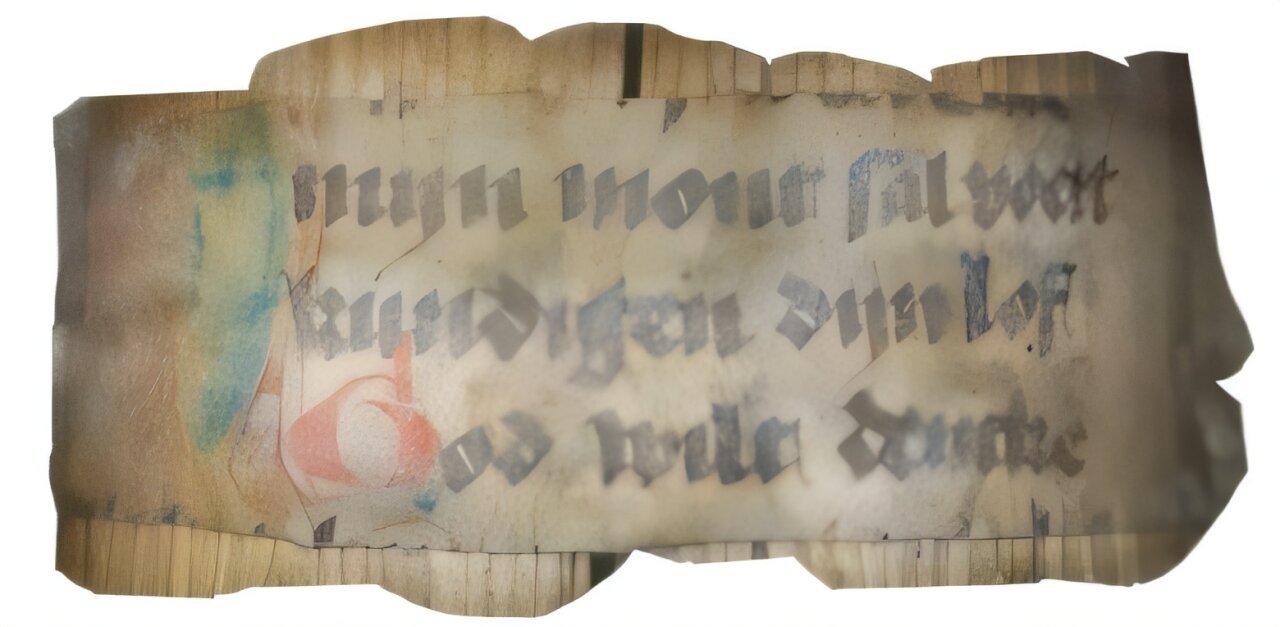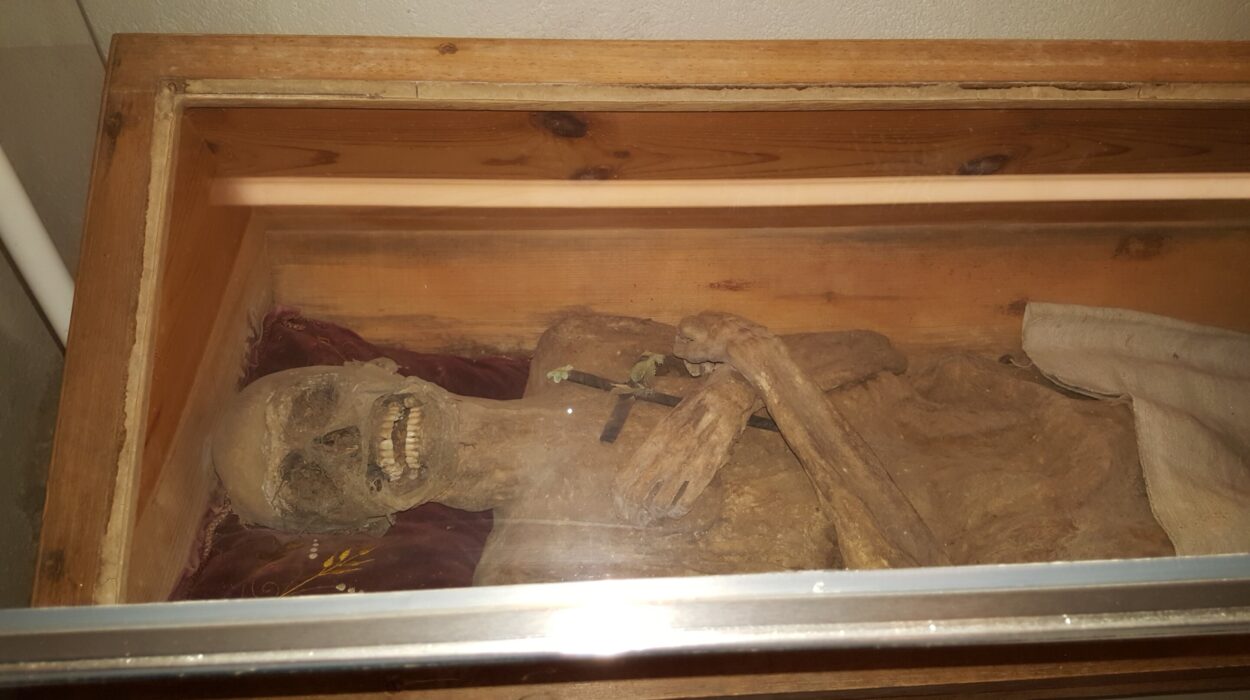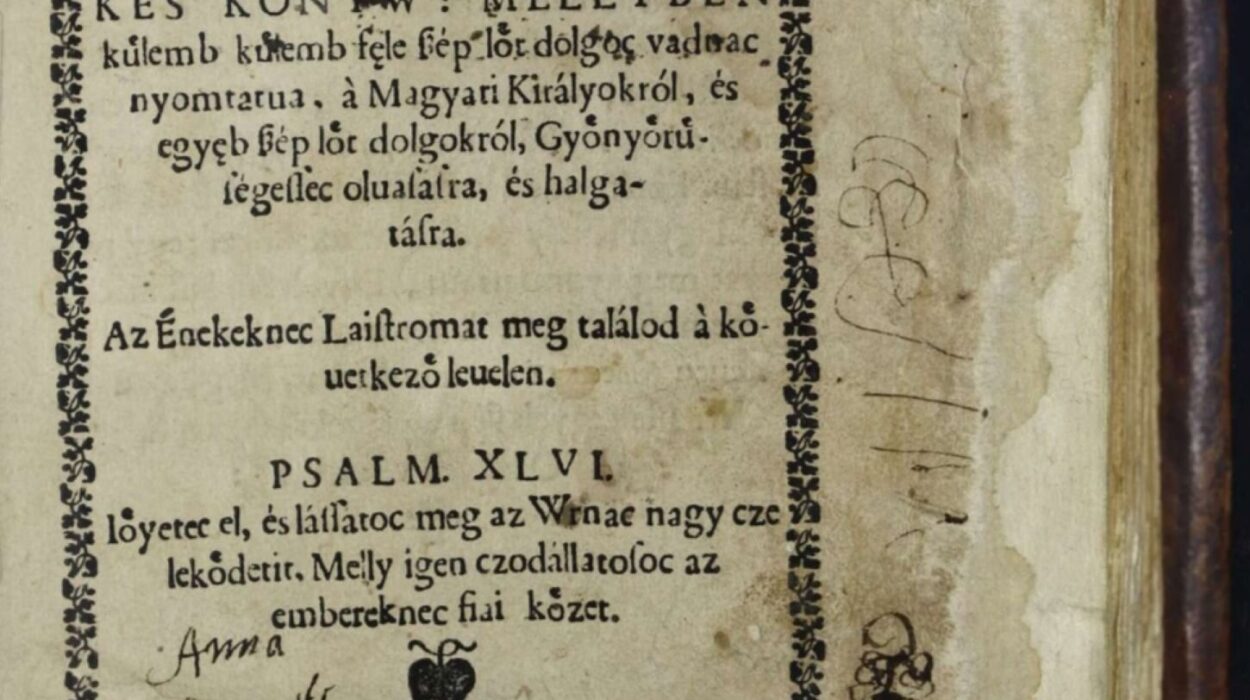In 1929, an archaeological discovery in Ephesos, an ancient city in modern-day Turkey, set off a series of speculations and theories that have persisted for nearly a century. Austrian archaeologist Josef Keil and his team uncovered a sarcophagus in the ruins of the “Octagon,” a grand building situated on the main street of Ephesos, near the Curetes Street. Inside the sarcophagus, filled with water, was a complete skeleton, but no significant grave goods. Keil decided to take the skull back to Vienna for further study, suspecting that it belonged to a distinguished individual.
Initially, Keil assumed that the skull belonged to a young woman, likely from the aristocracy, due to its features. This led to the idea that the remains might belong to Arsinoë IV, the sister of the famous Cleopatra, who had been murdered in Ephesos in 41 BCE at the instigation of Mark Antony. Over the years, this hypothesis was supported by the presence of architectural elements in the Octagon that appeared to be influenced by Egyptian design, fueling the belief that Arsinoë IV may have been buried there. The rumor persisted, with researchers and historians speculating on the identity of the skeleton.
In 1953, Josef Weninger, head of the Institute of Anthropology at the University of Vienna, published a paper with photographs and measurements of the skull. He too suggested that the skull might belong to a young woman of high social status, possibly the sister of Cleopatra. However, despite numerous discussions and publications about this theory, the identity of the person buried in the Octagon remained unresolved.
In 1982, further excavations in Ephesos uncovered more of the skeleton, though not inside the sarcophagus. This time, the bones were found in a niche in an antechamber of the burial chamber, adding to the mystery of the find. Given the historical context and the architectural features of the Octagon, many scholars continued to believe that the remains could belong to Arsinoë IV. The idea seemed plausible, as the theory aligned with the idea that she was murdered in Ephesos, and the Octagon’s design, which mirrored the Egyptian “Pharos of Alexandria,” seemed to further support this.
However, in 2023, a team of researchers from the University of Vienna, led by anthropologist Gerhard Weber, took a new approach to analyze the remains. Using modern scientific techniques, they sought to definitively determine the identity of the person buried in the Octagon. The interdisciplinary team included experts in evolutionary anthropology, genetics, orthodontics, and archaeology from the University of Vienna and the Austrian Academy of Sciences. Their goal was to use cutting-edge methods, including DNA analysis, to shed light on the mystery once and for all.
The first step in the new analysis was to scan the skull using micro-computed tomography (micro-CT), which provided high-resolution, 3D digital images of the skull. This allowed the researchers to examine the skull in great detail and document its features. Small samples were then taken from the skull’s base and inner ear to determine the age and genetic background of the individual. These samples were analyzed using mass spectrometry, with the data compared to calibration curves that accounted for dietary patterns, providing insight into the individual’s geographic origins.
The initial findings of the study confirmed that the skull dated from between 36 BCE and 205 BCE, which corresponds well with the traditional date of death of Arsinoë IV in 41 BCE. The team also found that the genetic profile of the skull matched that of the skeleton found in the antechamber, confirming that the skull and the bones belonged to the same person. This seemed to reinforce the theory that the remains were those of a historically significant individual. However, the subsequent discovery raised a major surprise: genetic testing revealed the presence of a Y chromosome, indicating that the individual was male.
The anthropological analysis of the skull, including the micro-CT scans, provided further unexpected results. The skull was determined to belong to a boy between the ages of 11 and 14 at the time of death, rather than an adult woman. This was corroborated by the dental examination, which showed that the boy’s teeth were still in the process of developing. The shape of the skull was also unusual, with one of the cranial sutures prematurely fused, giving the skull an asymmetrical appearance. The boy also exhibited significant developmental abnormalities, particularly in the jaw, which was underdeveloped and angled downward, likely causing difficulties in chewing. This, along with other signs of abnormal growth, suggested that the boy suffered from a pathological developmental disorder.

The analysis also revealed that the boy’s dental findings were consistent with his developmental issues. His first permanent molar showed no signs of wear, indicating that it was not used for chewing. In contrast, his first premolar, which appeared later in his dental development, showed signs of wear and cracks, likely due to excessive strain. The researchers concluded that the boy had difficulty chewing, possibly because of his jaw abnormalities, and that his teeth did not meet properly. While the specific cause of these growth disorders remains uncertain, the researchers speculated that it could have been due to a vitamin D deficiency or a genetic syndrome, such as Treacher Collins syndrome, which can result in facial and jaw abnormalities.
The findings led the researchers to revise the long-held assumption that the remains were those of Arsinoë IV. Instead, it was now clear that the remains belonged to a young boy with significant developmental disorders, likely of Roman origin, rather than a member of the Egyptian royal family. This discovery put an end to the speculation surrounding the identity of the person buried in the Octagon, dispelling the rumors that had circulated for decades.
The historical and architectural connections between the Octagon and Egypt remain an open question. It is unclear why the tomb was designed with such Egyptian influences, but the fact that the building was intended for a person of high social status is now evident. The discovery of the boy’s remains and the subsequent analysis have opened up a new avenue for research into the social and cultural context of Ephesos during the time of the Roman Empire.
While the mystery of the identity of the person buried in the Octagon has been solved, the search for Arsinoë IV’s final resting place is far from over. With the rumors finally put to rest, archaeologists and historians can now continue their search for the true burial site of Cleopatra’s sister, without the distraction of unfounded theories. The study of the boy’s remains has not only clarified a long-standing historical mystery but has also raised new questions about the cultural and historical context of ancient Ephesos. It is a reminder that archaeological discoveries often lead to unexpected revelations, and that the pursuit of knowledge, driven by scientific methods, can uncover truths that challenge longstanding assumptions and provide fresh insights into the past.
Reference: Gerhard W. Weber et al, The cranium from the Octagon in Ephesos, Scientific Reports (2025). DOI: 10.1038/s41598-024-83870-x






